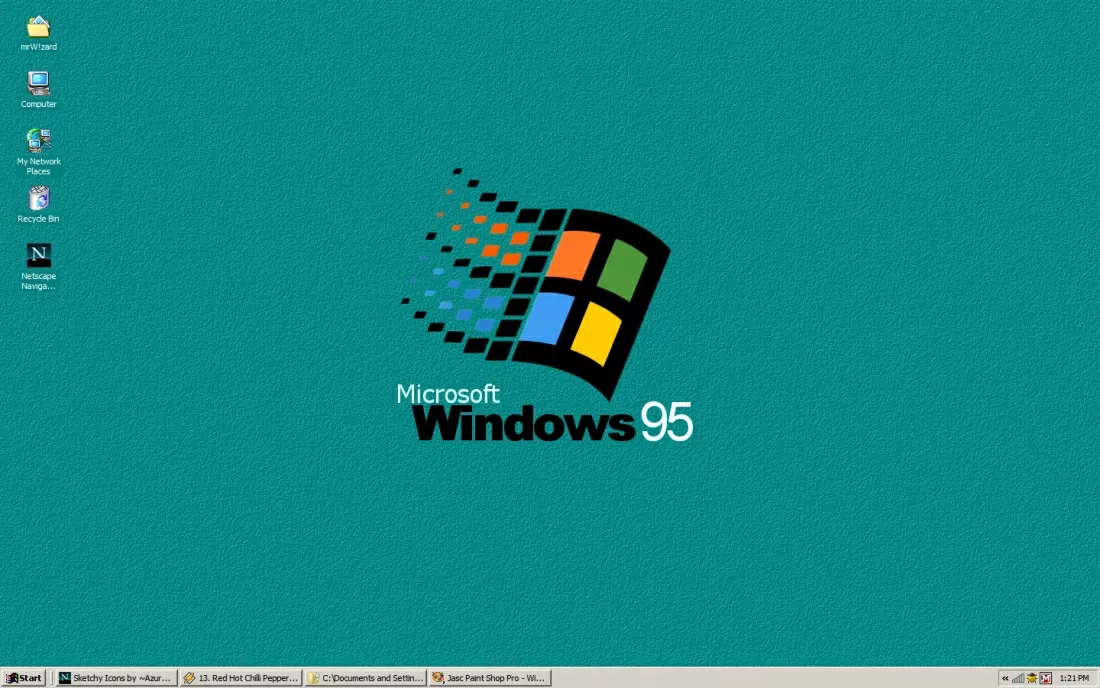
Windows 95: The OS That Revolutionized Computing
By Adedayo Oyetoke, Published on: August 19th 2024 5 min, 885 word Views: 870
In the vast timeline of technological advancements, few milestones stand as prominently as the release of Windows 95. This operating system, launched by Microsoft in 1995, didn’t just represent another software update; it marked a seismic shift in the way people interacted with computers. Windows 95 was more than just an OS; it was a cultural phenomenon, transforming personal computing from a niche interest into a mainstream necessity. This article delves deep into the features, innovations, and long-term impact of Windows 95, exploring why it remains a cornerstone in the history of computing.
Launch and Reception
When Windows 95 was launched on August 24, 1995, it was more than just a software release; it was a global event. The marketing campaign was unprecedented, with Microsoft reportedly spending over $300 million on promotions . The campaign included everything from TV commercials featuring the Rolling Stones' "Start Me Up" to massive retail events that turned the launch into a worldwide spectacle.
Why Was Windows 95 So Revolutionary?
The anticipation around Windows 95 was not just about marketing hype. Windows 95 was revolutionary because it introduced features that fundamentally changed how users interacted with their computers. Prior to Windows 95, operating systems like MS-DOS required users to type commands, which was daunting for the average person. Windows 95 made computers accessible to the masses with its graphical user interface (GUI) and intuitive design .
For a deeper understanding of how earlier operating systems like MS-DOS paved the way for Windows 95, check out The Evolution of MS-DOS: From Command Line to Legacy.
Key Innovations
- Start Menu and Taskbar
One of the most iconic features of Windows 95 was the introduction of the Start Menu and Taskbar. Before this, managing multiple programs was cumbersome and confusing. The Start Menu provided a centralized place to access programs, files, and settings, while the Taskbar allowed users to see and switch between open applications easily.
- Plug and Play
Another groundbreaking feature was Plug and Play (PnP), which allowed users to install hardware like printers and scanners without manually configuring drivers and settings. This was a massive leap forward in user-friendliness, as it simplified the process of expanding the capabilities of a PC.
- Long File Names
Before Windows 95, file names were limited to eight characters, followed by a three-character file extension (e.g., "report.doc"). Windows 95 introduced the ability to use long file names, allowing users to create more descriptive and organized file structures .
- The Introduction of the Right-Click
The concept of the right-click was first fully realized in Windows 95. This simple yet powerful feature gave users quick access to context-specific options, improving efficiency and usability. It’s hard to imagine modern computing without the right-click functionality, but it was Windows 95 that brought it to the forefront.
For a comparative look at how operating systems evolved after Windows 95, check out Debian vs Windows: Open Source vs Proprietary.
User Experience
- A New Era of Accessibility
Windows 95 is often hailed as the OS that brought personal computing into the homes of everyday people. Its user-friendly interface made it possible for those with little to no technical knowledge to use a computer effectively. The GUI was clean, with easily navigable icons and menus, which significantly lowered the barrier to entry for new users.
- Multitasking Made Easy
Windows 95 introduced preemptive multitasking, allowing users to run multiple applications simultaneously without significant performance issues. This was a game-changer for productivity, as users could now have a word processor, a spreadsheet, and a web browser open at the same time, seamlessly switching between tasks.
To see how the multitasking features of Windows 95 compare to modern mobile OS capabilities, visit Comprehensive Guide to the Latest Android Version: Features and Updates.
Long-term Impact
- The Legacy of Windows 95
Windows 95 set the standard for all future operating systems. The concepts introduced, like the Start Menu, Taskbar, and Plug and Play, became staples in subsequent versions of Windows and even influenced other operating systems. The shift from command-line interfaces to GUIs that began with Windows 95 marked the beginning of the modern computing era .
- Windows 95 in Popular Culture
The impact of Windows 95 extended beyond technology. It became a part of popular culture, often referenced in movies, TV shows, and even art. The OS symbolized the dawn of the digital age, where computers became an integral part of everyday life.
What Changed with Windows 95?
Windows 95 introduced a new era of computing where the focus was on ease of use and broad accessibility. It moved away from the complexities of MS-DOS, making it possible for almost anyone to use a computer without needing to learn a new language. This shift had a lasting impact on how software was designed and developed in the years to come.
For more insights into how graphical user interfaces evolved from their early days, read Windows 3.1: The Birth of the Graphical User Interface.
Conclusion
Windows 95 was more than just an operating system; it was a revolution that democratized computing. It made personal computers accessible to the masses, introduced features that are now standard in all operating systems, and had a lasting impact on both technology and culture. Whether you’re a tech enthusiast or someone who lived through the dawn of the digital age, Windows 95 remains a powerful example of how technology can transform society.
For a discussion on the impact of operating systems on computing as a whole, check out The Penguin Revolution: How Linux Went from Quirky Code to Global Phenomenon.
